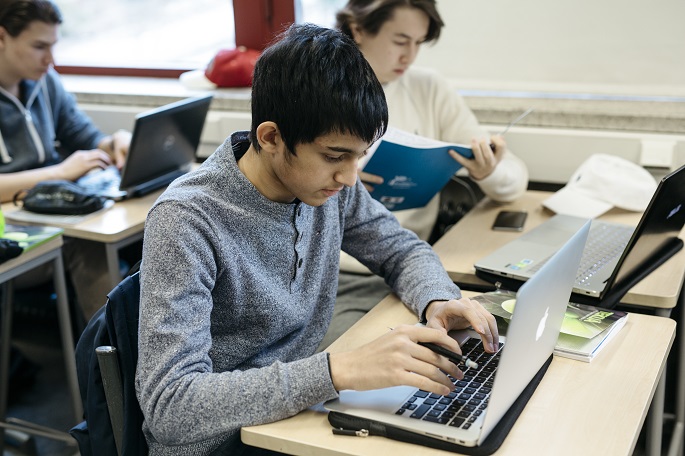Finnish students´ creative thinking level high in PISA ranking
Published : 19 Jun 2024, 02:51
Updated : 19 Jun 2024, 02:54
In Finland, young people demonstrated a high level of creative thinking, girls being among the best performers, according to the Programme for International Student Assessment (PISA) 2022 published on Tuesday.
The results of the Organization for Economic Cooperation and Development (OECD) countries for PISA measured how 15-year-olds in the participating countries were able to generate solutions for problems in everyday contexts, said the Ministry of Education and Culture in a press release referring to the ranking.
The first results of PISA 2022 were reported for mathematical, reading and scientific literacy in December 2023.
In addition to these core domains of assessment, PISA assessed students in the fourth, innovative assessment domain, targeting creative thinking. Students in 64 participating countries and economies took the test.
Finland’s 15-year-olds achieved high scores in the creative thinking assessment, outperforming the OECD average.
The countries that performed better than Finland were Singapore, Korea, Canada and Australia, while New Zealand, Estonia, Denmark and Latvia were on a par with Finland.
Of 15-year-olds, 39 per cent achieved proficiency levels 5 or 6, which are the top-performing levels in PISA, compared with the OECD average of 27 per cent.
PISA defines creative thinking as the “competence to engage productively in the generation, evaluation, and improvement of ideas that can result in original and effective solutions, advances in knowledge, and impactful expressions of imagination”.
For the assessment, creative thinking was broken into three facets: 1) generate diverse ideas, 2) generate creative ideas, and 3) evaluate and improve ideas.
Minister of Education Anna-Maja Henriksson was delighted to hear that Finland’s 15-year-olds scored top results in creative thinking by international standards.
"Creativity and innovation are at the heart of Finland's future and success. The results of the PISA 2022 Creative Thinking assessment show that this is an area where Finnish schools have excelled in their mission to shape our future," said Henriksson.
Girls have outperformed boys in reading, mathematics and science across various PISA assessments. In the PISA 2022 Creative Thinking assessment, girls outperformed boys in all participating countries. The gender gap in Finland was the widest in favour of girls out of all OECD countries.
In Finland, nearly half of girls were ranked among the top performers in creative thinking.
The number of low-performing girls was small. Girls performed particularly well in social problem solving. Boys' scores were closer to the OECD average but they also performed fairly well on average.
Based on the PISA 2022 results published earlier, variation between Finnish schools remains small by international standards, and this can also be seen in creative thinking.
In the school-level comparison, Finnish schools stood out because they only showed small differences between schools of higher and lower socio-economic status, based on their average status. Students in urban schools, however, performed slightly better than their peers in rural schools.
In creative thinking, the performance of students with an immigrant background was generally below that of non-immigrant students in the OECD countries, with an exceptionally wide gap between the two groups.
The performance differences, however, were largely explained by the fact that creative thinking was measured through tasks that not only required reading comprehension but, in particular, written expression.
The Finnish national core curriculum sees creativity through a wide lens as a premise guiding both teaching and learning. It is a skill that students can develop in the context of various subjects, multidisciplinary learning modules and learning environments. Enhancing creativity is determined as one of the key missions of teaching in the value base of primary and lower secondary education.
Young people in Finland performed particularly well in the collaborative solving of social problems, which is also one of the objectives set out in the national core curriculum's principles for developing the school culture. More than half of the students felt that they were encouraged at school to come up with original solutions.


